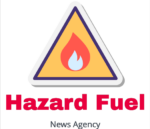An Overview of Torch Down Roofing: Types, Materials, and Benefits
A torch-down roof: what is it?
The reason why torch down roofing, also known as “torch on” roofing, gets its name from the fact that it needs an open-flame propane torch. With this installation technique, modified bitumen sheets are rolled out onto the roof, and the material is heated and adhered to the surface by a roofing specialist using a hand-held propane torch. Seams are fused together to form a watertight seal once the layers reach the proper temperature.
Read More: Vancouver Torch On Roofing
A torch-down roof’s membrane layers are composed of bitumen, an asphaltic substance that has been altered with either plastic or rubber. This kind of roofing’s primary advantage is its ability to stretch and shrink without melting or breaking. It can withstand extremes of heat and cold that it will encounter on the roof as the seasons change. Torch down roofing comes in two- and three-layer systems, among other varieties.
This article might help you weigh the benefits and drawbacks of torch down roofing if you’re unsure if it’s the best option for your flat roof. We will also go into the specifics of the layers and materials that go into making a burn down roof.
Materials for Torch-Down Roofing
A torch down roof may have been referred to as a “rubberoid” roof, which suggests the material comprises rubber, although the term may not be precise. Bitumen with additives, or modified bitumen, is used to make all torch-down roofing. Bitumen is derived from asphalt, a durable substance utilized in several roofing scenarios. In order to manufacture torch-down roofing, bitumen must be altered or combined with a polymer.
Styrene Butadiene Styrene (SBS) modified bitumen is an additional polymer that is added to bitumen to generate roofing material. SBS, a kind of rubber, has a lower melting point than APP and adds flexibility to bitumen. Bitumen roofing membranes modified with SBS can be applied with a torch, but they can also be self-adhered, processed in a cold environment, or mopped on.
For burn down roofing membranes, a mat made of fiberglass, polyester, or another material is frequently utilized as a robust core. Additionally, to offer fire resistance, color choices, ultraviolet (UV) radiation protection, or other unique features, manufacturers may choose to implant tiny granules into the membrane’s top.
Torch down roofing types
Two-layer and three-layer torch down roll roofing systems are the two primary varieties. Both methods include of a base and a cap sheet; however, the roofing specialist will apply the base sheet first, followed by the smooth cap sheet and finally, the granular cap sheet in the three-layer system. This additional layer often improves the roof’s energy efficiency, fire resistance, color, and other qualities while also extending its lifespan.
Distinctions Between Hot Mopped and Torch Down
Owners of buildings may have to decide between a hot mopped roof, also known as Built Up Roofing (BUR), and a torch down roof. What makes a difference? The moniker “hot mopped roof” comes from the way it’s installed. The roofing experts apply liquid asphalt to the roof and distribute it with a mop after laying down foundation and felt layers. After that, the asphalt seals, giving rise to a robust, waterproof roof.
The lifespans of the two types of roofing systems are comparable, while hot mopped systems are marginally less UV and puncture resistant. Installing a hot mop often costs less than torch down. Roofing specialists installing a hot mop system, however, could be exposed to vapors for an extended period of time, therefore they need take safety measures.
Benefits of Rooftop Torch Down Systems
Torch down roofing has a lot of benefits. Any roof system’s primary goal should be to keep water out of the building or structure, and burn down roofing offers superior water resistance. The flat surface of a torch down roof keeps water from gathering and lets it drain off, provided the membrane and insulation are put in accordance with manufacturer application instructions.
All climates are suitably suited for torch down roll roofing, which expands in warm weather and contracts in cold weather without melting or splitting like other materials could. The extended longevity of torch down roofing is attributed to this capability.
Flat roofs have difficulties in often snowy climates because snow accumulates there until it melts. In areas with snowfall, burn down roofing that is resistant to water is a great option.
Other outstanding qualities of the cap sheet on a torch-down roofing system include resistance to UV radiation and reflection, which helps to keep the structure cool and energy-efficient.
Repairing a burn down roofing system is a somewhat easy operation if it has to be done. The tear, gap, or damaged seam may be patched with modified bitumen membrane. Similar to the installation procedure, repairs are made with a torch.
